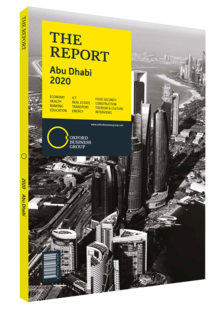How natural assets are driving ecotourism in Abu Dhabi
Environmentally protected areas – including sandy deserts, oases, mountains, beaches and salt plains – make up 5000 sq km of the UAE’s territory, and as the largest emirate, Abu Dhabi benefits greatly from its share of these, as does its growing ecotourism segment. Indeed, most of the emirate’s protected areas are open to visitors, with ecotours operated by groups such as Emirates Environmental Group, the Emirates Bird Records Committee and the Emirates Natural History Group, as well as by private tour operators and hotels.
This serves as a solid foundation for the national plan to establish the UAE as an ecotourism centre. The project, known as the UAE’s Natural Wonders, was launched in mid-2018 by the federal Ministry of Climate Change and Environment. It aims to promote ecotourism across the seven emirates’ 43 nature reserves. To attract visitors to these nature destinations, the ministry has developed a microsite and an app, and is collaborating with travel agencies and airlines on various promotion initiatives.
In addition, ecotourism is set to be one of the chief benefactors of the Abu Dhabi government’s new, Ghadan 21, or Tomorrow 21, investment programme. This will see Dh50bn ($13.6bn) channelled into a range of sectors between 2019 and 2021, with the aim of stimulating investment and employment. Ghadan 21 includes tax incentives for the private sector as well as infrastructure spending to support the development of environmentally friendly projects and ecotourism destinations in underdeveloped areas, benefitting ecotourism in greenfield sites, desert areas and uninhabited islands. In addition, sustainability is a pillar of the Abu Dhabi Economic Vision 2030, which aims to integrate Abu Dhabi’s environmental, economic and social resources with associated environmental outcomes and sustainability values, including tourism.
Conservation & Development
The emirate’s protected areas have been established and are overseen by the Environment Agency - Abu Dhabi, which safeguards the emirate’s biodiverse areas and performs yearly compliance inspections and risk assessments. One of the most important sites is Abu Dhabi’s Sheikh Zayed Protected Areas Network, which incorporates a long and notable list of national parks and biosphere reserves. These range from the Empty Quarter’s Qasr Al Sarab Protected Area – home to the world’s largest population of Arabian oryx – to the Al Wathba Wetland Reserve, where some 4000 flamingos winter yearly.
Another culturally significant ecotourism site is the Al Ain Oasis, which was the UAE’s first UNESCO World Heritage site. The oasis hosts an educational eco-centre that provides insight into the people who lived in the desert 4000 years ago, showing how they worked with the delicate oasis ecosystem to carry out traditional farming. Extensive pathways wind through the 1215-ha oasis’s 147,000 date palms, displaying 100 different varieties of vegetation and working farms.
Visitors to another UNESCO site, the Marawah Marine Biosphere Reserve, may see endangered species such as the green turtle and the dugong. Within the reserve, Al Batinah Island’s sea cows, Socotra cormorants and mangroves draw tourists from around the world. In the west of the emirate, the Al Yasat Marine Protected Area’s coral reefs provide foraging habitats for the endangered Hawksbill turtle, and its island’s archaeological sites are of national and regional importance.
Tranquil Counterpoint
Abu Dhabi possesses some 70 sq km of mangrove forests along its coastline. These support a complex network of marine life, while also sequestering carbon, with their root systems absorbing and dissipating the force of waves and storm surges, which helps to halt coastal erosion.
Developed by Modon Properties on Al Jubail Island, the Mangrove Walk project is slated to open in 2020. It will feature a boardwalk that extends through 1m sq metres of marine mangrove forest. When the project is complete, visitors and residents will be able to walk and kayak through the entirety of the marine area.
You have reached the limit of premium articles you can view for free.
Choose from the options below to purchase print or digital editions of our Reports. You can also purchase a website subscription giving you unlimited access to all of our Reports online for 12 months.
If you have already purchased this Report or have a website subscription, please login to continue.

